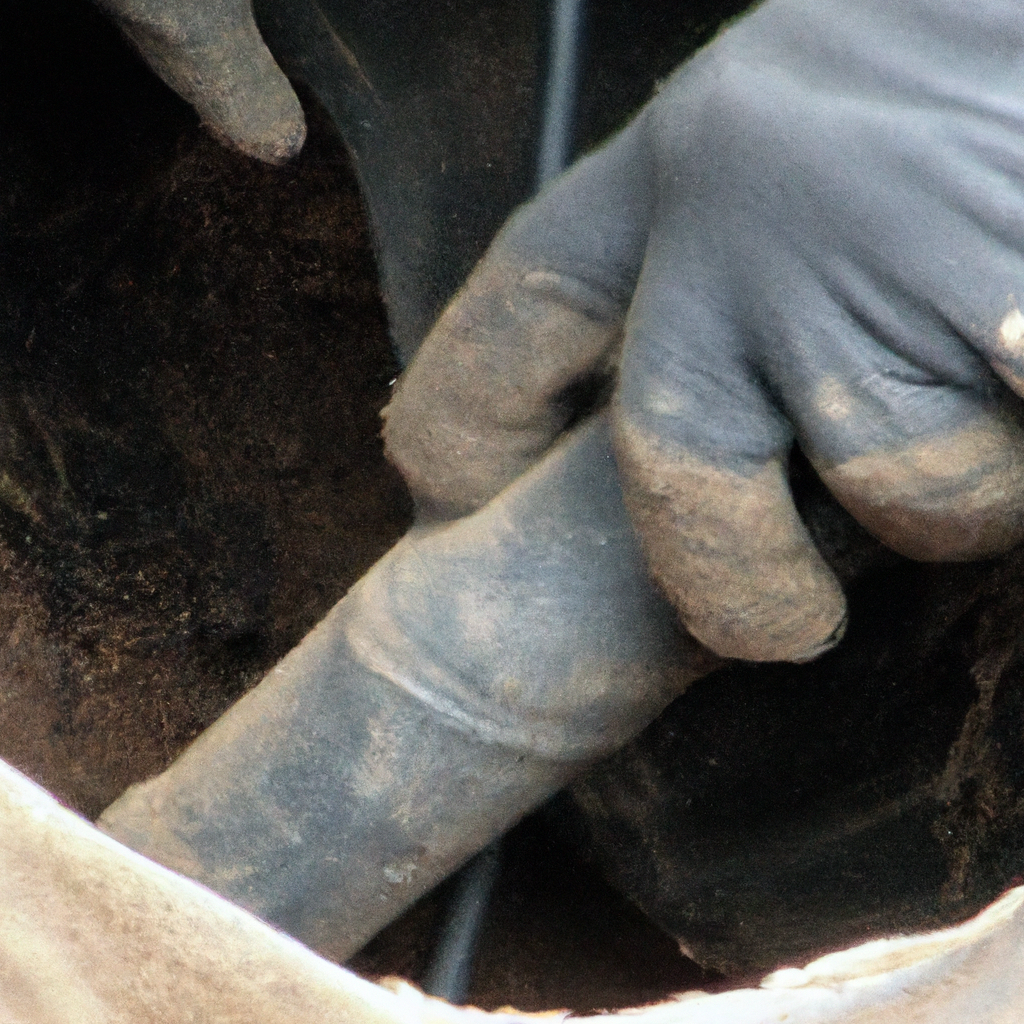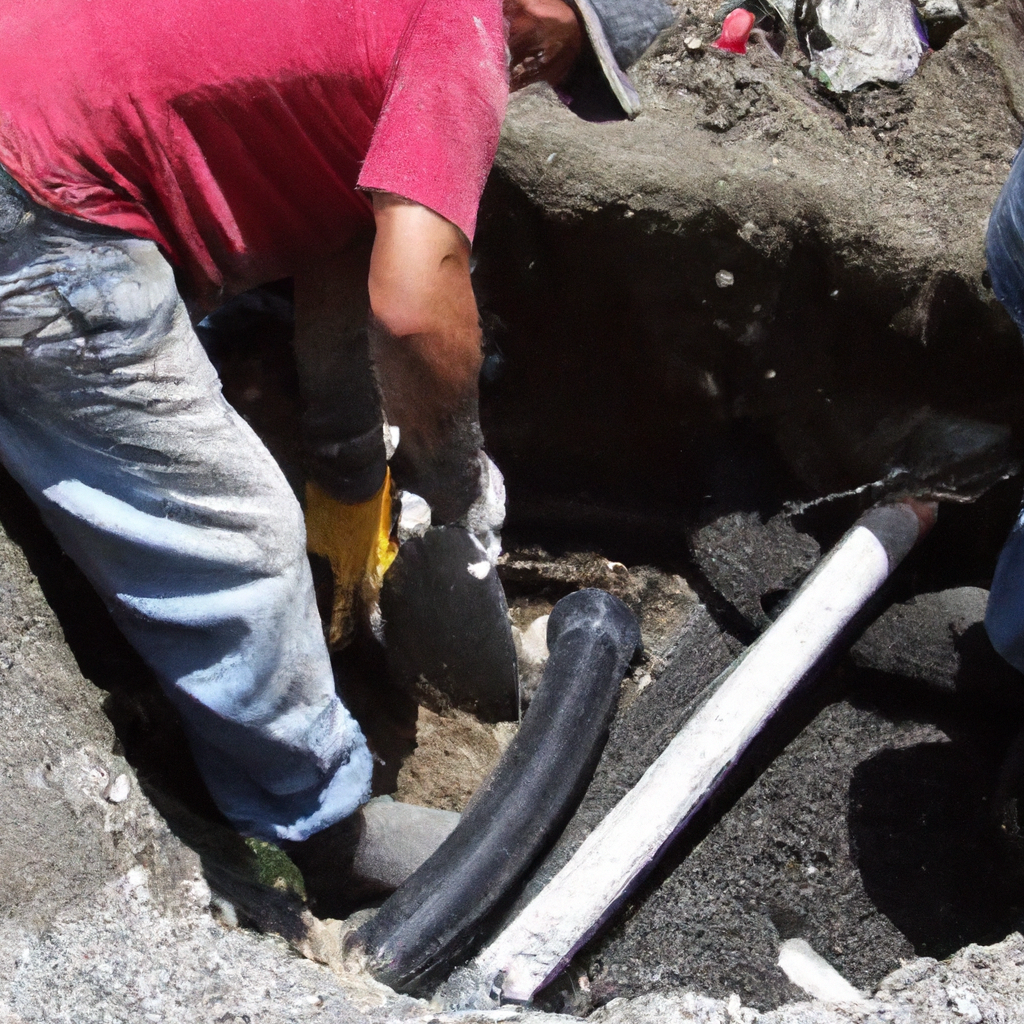If you find yourself in need of replacing a concrete septic tank cover, fear not! This article will provide you with the essential steps and tips to successfully tackle this task. With a friendly and informative tone, you’ll discover the necessary tools, materials, and techniques to replace your concrete septic tank cover with ease. Say goodbye to any worries or uncertainties as you embark on this journey to a functional and well-maintained septic system.
Understanding Septic Tanks
What is a Septic Tank?
A septic tank is an underground wastewater treatment system commonly used in rural areas where there is no access to a centralized sewer system. It is a vital component of a septic system and serves as a holding tank for household wastewater. The tank allows the separation of solids from the liquid, enabling the liquid effluent to be slowly released into the drain field for further treatment and absorption into the soil.
Different Types of Septic Tanks
Septic tanks come in various materials, but one of the most common and durable options is a concrete septic tank. Concrete tanks are known for their strength and longevity, making them a popular choice among homeowners. Other types of septic tanks include plastic and fiberglass tanks, which are often used in areas with challenging soil conditions or for smaller residential properties.
Significance of Septic Tank Covers
Septic tank covers play a crucial role in maintaining the integrity and functionality of the septic system. These covers provide access to the septic tank for pumping, routine maintenance, and inspections. They also serve as protective barriers, preventing debris, animals, and even people from accidentally falling into the tank. Additionally, well-designed covers can enhance the aesthetics of the property by seamlessly blending into the surrounding landscape.
Recognizing the Need for Cover Replacement
Signs of Damaged Septic Tank Cover
Over time, septic tank covers can deteriorate, especially if not properly maintained. It is important to recognize the signs of a damaged cover to prevent potential risks and ensure the proper functioning of the septic system. Signs of a damaged septic tank cover may include cracks, chipped edges, or visible wear and tear. You may also notice an unpleasant odor around the area or experience difficulty when removing the cover.
Potential Risks of a Damaged Septic Tank Cover
A damaged septic tank cover can pose risks to both the homeowner and the environment. Firstly, it can lead to accidental falls or injuries if someone unknowingly steps on a weakened or cracked cover. Secondly, a damaged cover can allow pests or wildlife to access the tank, potentially causing blockages or contaminating the surrounding groundwater. Moreover, a compromised cover can lead to excess moisture entering the tank, increasing the risk of system failure or bacterial imbalance.
Timeframe and Factors Contributing to Cover Deterioration
The lifespan of a septic tank cover can vary depending on several factors. Generally, a well-maintained concrete cover can last for decades. However, certain elements can contribute to its deterioration over time. These factors include UV exposure, temperature fluctuations, freeze-thaw cycles, soil conditions, chemical damage, and heavy loads placed on the cover. Regular inspections and maintenance are key in detecting early signs of cover damage and addressing them promptly.

Preparation for the Replacement
Safety Considerations
Prior to replacing a septic tank cover, it is essential to prioritize safety. The area surrounding the tank should be clear of any obstructions, ensuring a safe working environment. It is advisable to wear appropriate protective gear, such as gloves and safety glasses, to minimize the risk of personal injury. Moreover, it is crucial to exercise caution while handling heavy tools or equipment during the replacement process.
Gathering Required Tools and Materials
To successfully replace a concrete septic tank cover, several tools and materials are necessary. These may include a pry bar or jackhammer, depending on the type of cover removal required. Additionally, a shovel or excavation equipment will be needed to access the septic tank. It is important to have a measuring tape, level, and foam gasket or sealant to ensure proper installation of the new cover. Gathering all the required tools and materials in advance will streamline the replacement process.
Finding the Right Replacement Cover
When selecting a replacement cover, it is crucial to consider the dimensions, weight, and design compatibility with your specific septic tank. The cover should fit securely and provide a proper seal to prevent any leaks or odors. It is recommended to consult with a professional or an expert at a local hardware store to ensure you choose the correct cover that meets the required standards and regulations for your septic system.
Locating the Septic Tank
Methods to Locate Your Septic Tank
Locating the septic tank is an important step in the cover replacement process. There are a few methods you can use to find the exact location of the tank. One way is to refer to the property’s as-built drawings or blueprints, which may indicate the tank’s position. If the drawings are unavailable, you can also look for visual clues such as depressions in the ground, lush grass growth, or septic tank marker signs. If all else fails, contacting a professional septic system service provider can help in accurately locating the tank.
Importance of Septic Tank Location Identification
Knowing the precise location of your septic tank is crucial for various reasons. It aids in efficient maintenance, repair, and pumping of the tank. Additionally, locating the tank allows you to coordinate with utility companies or other contractors to avoid any accidental damage during construction or landscaping projects. Furthermore, identifying the tank’s position ensures compliance with local regulations and allows for proper inspections and certifications.
Safety Precautions during the Process
It is essential to prioritize safety when locating the septic tank. Always exercise caution while digging or excavating, as there may be underground utility lines or other hazards. Before conducting any excavation work, contact your local utility locator to mark the location of buried utility lines. This will help prevent accidents and potential damage to essential infrastructure. It is also crucial to follow any safety guidelines or regulations set forth by your local authorities.

Removing the Existing Septic Tank Cover
Initial Steps for Removal
Removing the existing septic tank cover requires careful planning and execution. Begin by clearing the area surrounding the tank, ensuring there are no obstacles or debris in the way. If the cover is made of concrete, use a pry bar or jackhammer to loosen it from its position. Take caution not to damage the tank or any pipes during the removal process. For covers made of other materials, follow the manufacturer’s instructions for safe removal.
Lifting the Concrete Cover
When dealing with a concrete septic tank cover, lifting it can be a challenging task due to its weight. It is advisable to have assistance from another person to ensure safe lifting. With the help of a pry bar or lever, carefully lift one edge of the cover while another person provides support. Slowly work your way around the perimeter, gradually lifting and moving the cover away from the opening. Take breaks as needed and avoid excessive strain to prevent personal injury.
Dealing with Difficulties during Removal
Sometimes, the existing cover may be stubbornly stuck or damaged, making its removal more challenging. In such cases, it is recommended to seek professional assistance. Professionals have the necessary experience and equipment to handle difficult cover removals safely. Attempting to force or forcefully break a cover can result in personal injury or damage to the septic tank itself. It is important to approach cover removal with caution and opt for expert help when needed.
Inspecting the Opened Septic Tank
Checking the Tank’s Internal Condition
Once the septic tank cover has been successfully removed, take the opportunity to inspect the tank’s internal condition. Look for any signs of damage, such as cracks, corrosion, or excessive sludge buildup. Check for proper baffles and ensure they are intact and functioning, as they play a vital role in separating solids from the liquid effluent. Use a flashlight or portable light source to thoroughly examine the interior of the tank.
Identifying Any Additional Repairs Required
During the inspection, if any additional repairs are needed, it is important to address them promptly. Cracks or leaks in the tank should be repaired to prevent groundwater contamination or structural integrity issues. Baffles that are damaged or missing should be replaced to maintain proper flow and prevent solids from entering the drain field. Identifying and fixing these issues will contribute to the optimal functioning and longevity of your septic system.
Understanding Why Ongoing Maintenance is Crucial
Inspecting the opened septic tank highlights the importance of ongoing maintenance for the overall health and longevity of the system. Regular maintenance, including pumping and cleaning the tank, helps remove accumulated solids and prevents blockages or system failures. It is crucial to adhere to a maintenance schedule recommended by professionals or local regulatory agencies. By practicing regular maintenance, you can ensure the efficiency and effectiveness of your septic system.

Installing the New Concrete Cover
Steps to Properly Seat the New Cover
Installing the new concrete septic tank cover requires careful alignment and placement. Begin by cleaning the rim or edges of the tank opening to ensure a smooth surface for the cover to rest upon. Place a foam gasket or sealant on the rim of the tank to create a watertight seal. Carefully lower the new cover onto the gasket, ensuring it is aligned properly with the tank opening. Apply even pressure around the cover to seat it securely.
Ensuring Correct Alignment and Fit
Proper alignment and fit are crucial for the functionality and longevity of the new cover. Ensure that the cover is centered and level on the tank opening. Misalignment can lead to leaks, odors, or an unstable cover that may crack or deteriorate prematurely. Use a level to check for any discrepancies and make necessary adjustments before fully securing the cover. Taking the time to ensure correct alignment will optimize the performance and lifespan of the septic tank cover.
Final Adjustments Needed for Installation
After the new cover is set in place, make any final adjustments required for proper installation. Check for any gaps or unevenness between the cover and the tank opening. If necessary, add additional foam gasket or sealant to fill any gaps and create a tight seal. Ensure that the cover is securely positioned, with no wobbling or movement when pressure is applied. Double-check the alignment and fit, and address any issues before completing the installation process.
Sealing the New Septic Tank Cover
Purpose of Sealing the Cover
Sealing the new septic tank cover is an essential step to prevent leaks, odors, and potential contamination. A proper seal acts as a barrier, preventing groundwater from entering the tank and inhibiting the escape of odors. It also helps maintain the structural integrity of the tank and ensures the cover remains securely in place. Sealing the cover contributes to the overall efficiency and functionality of the septic system.
Choosing the Right Sealant
Selecting the right sealant is crucial to achieve an effective and long-lasting seal for your septic tank cover. Look for a sealant specifically designed for use with septic systems and suitable for the materials of the cover and the tank. Consider factors such as the compatibility with different weather conditions, durability, and resistance to chemical exposure. Consult with professionals or refer to manufacturer recommendations to choose the most appropriate sealant for your specific application.
Appropriate Application Technique for Sealant
Applying the sealant correctly is essential to ensure a reliable and durable seal. Clean the cover and the rim of the tank opening before applying the sealant. Follow the manufacturer’s instructions for the specific sealant being used. Apply an even layer of sealant around the rim, ensuring complete coverage of the area where the cover will rest. Use a caulk gun or other recommended application tool to achieve a consistent and uniform seal. Allow the sealant to cure and set according to the manufacturer’s guidelines before subjecting the cover to regular use.

Post Installation Inspection
Checking Installation Success
After the new septic tank cover has been installed and sealed, it is important to conduct a thorough inspection to ensure a successful replacement. Check for any visible gaps or areas that may indicate an incomplete or ineffective seal. Ensure that the cover is securely in place and level. Look for signs of moisture or leaks around the cover and the rim of the tank opening. A meticulous post-installation inspection contributes to the long-term functionality and reliability of the septic system.
Testing the Sealant
To verify the quality and effectiveness of the sealant, perform a simple test. Pour a small amount of water around the edges of the cover and observe for any signs of leakage. If you notice water seeping through, there may be an issue with the sealant or the installation. Promptly address any concerns or defects by reapplying sealant or seeking professional assistance. Testing the sealant allows for early detection of potential problems and ensures a watertight seal.
Arranging for Professional Inspection if Required
If you have any doubts about the installation or encounter difficulties during the replacement process, it is advisable to arrange for a professional inspection. A certified septic system provider or specialist can thoroughly evaluate the entire septic system, including the new cover, to ensure compliance with local regulations and proper functioning. They can identify potential issues and provide expert guidance on any necessary repairs or maintenance to optimize the septic system’s performance and longevity.
Maintaining the New Septic Tank Cover
Routine Checks and Tune-ups
Maintaining the new septic tank cover is crucial for the continued functionality of the septic system. Schedule regular inspections to check for signs of damage, wear, or any potential issues. Ensure that the cover remains securely in place and level. Additionally, conduct routine checks of the sealant to identify any cracks or gaps that may require reapplication. Regular maintenance and tune-ups will help keep your septic tank cover in optimal condition and extend its lifespan.
Preventing Future Damage
To prevent future damage to the septic tank cover, there are several proactive measures you can take. Avoid placing heavy objects or vehicles on the cover, as this can lead to cracking or structural damage. Keep the area surrounding the tank clear of sharp or abrasive materials that may cause wear or scratches. Regularly inspect the cover for signs of deterioration and address any issues promptly. Taking preventive actions will minimize the risk of cover damage and ensure the long-term performance of your septic system.
Knowledge on Regular Cleaning and Maintenance
Alongside maintaining the septic tank cover, it is important to understand regular cleaning and maintenance procedures for the entire septic system. Regularly pumping and cleaning the septic tank removes accumulated solids and prevents excessive buildup. Follow guidelines provided by professionals or local regulatory agencies regarding the recommended schedule for pumping and cleaning. Additionally, be mindful of what you flush down the drains to prevent clogs and system malfunctions. Educating yourself on proper cleaning and maintenance practices ensures the longevity and reliability of your septic system.
In conclusion, understanding septic tanks and their covers is vital for proper maintenance and care of your septic system. Recognizing the signs of cover damage, ensuring safety during replacement, and choosing the right materials and sealants are essential steps in the process. Regular inspections, proper installation, and ongoing maintenance contribute to the functionality, efficiency, and longevity of your septic tank cover. By following these guidelines and practicing responsible waste management, you can ensure a healthy and well-maintained septic system for your property.

